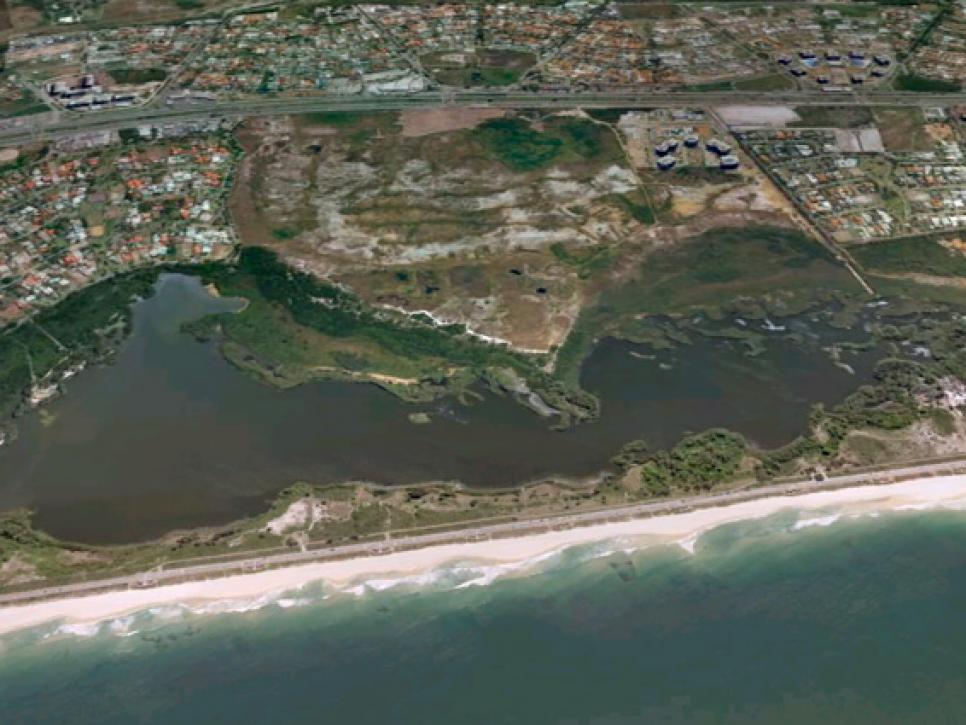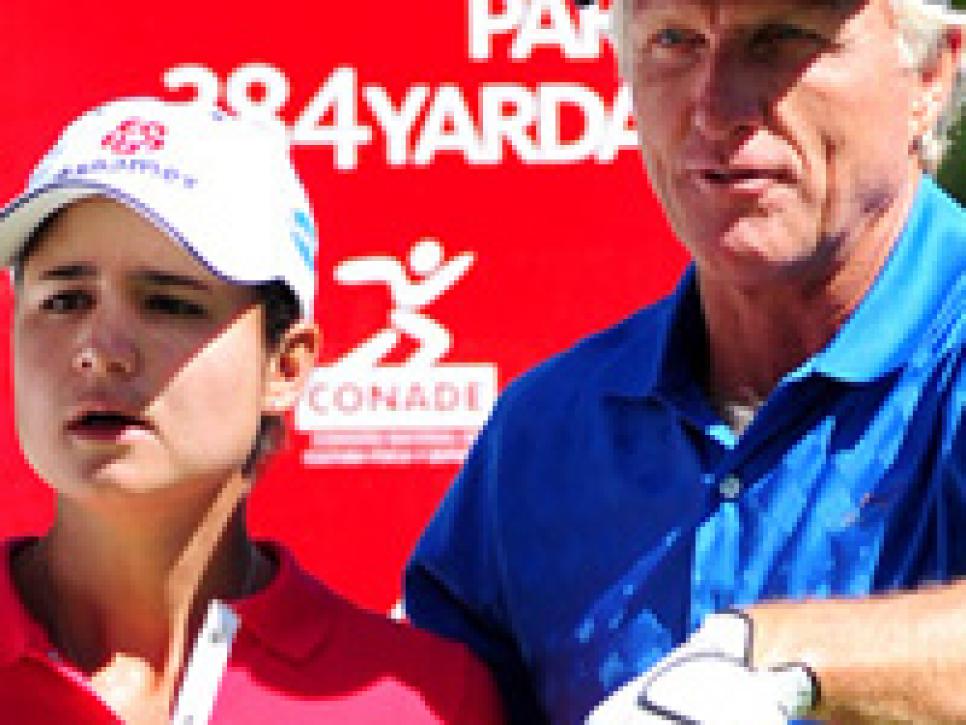News
Designs On Rio

The derby to design Rio de Janeiro's Olympic golf course flew mostly under the golf world's radar until Nick Faldo went public with his idea to parade a cavalcade of former major winners down a red carpet, blueprints in hand, preparing to break out in a show-stopping, all-star arm-waving session that would send the no-name contenders back to their dressing rooms.
Before Faldo revealed his major-champions-only design concept for Rio's soon-to-be-built public course that will host the 2016 competition for the world's best male and female golfers, reports had surfaced revealing who was interested in the job. The duo of Jack Nicklaus and Annika Sorenstam offered to waive their design fee, with Nicklaus adding the "future of golf hinges" on a decision he is growing impatient waiting for. Greg Norman and Lorena Ochoa issued a press release announcing their interest, with Norman later mocking Faldo's all-star design idea in comments to Golf World's Tim Rosaforte ("What are we going to do, draw straws to see who designs the 10th hole?").
Meanwhile, Robert Trent Jones Jr. signed up Brazilian golf great Mario González, who will celebrate his 90th birthday in 2013 when the course should be under construction. And, according to the PGA Tour and International Golf Federation official Ty Votaw, other architects have turned up in Rio "uninvited" to announce their interest in bidding for the job. Otherwise, the process and names involved have been shrouded in secrecy.
Faldo's proposal calls for veteran designer Tom Fazio to meld the thoughts of a who's-who list of male and female major champions into a star-studded design. For insiders, it's Exhibit A as to why the Olympic organizers and IGF have kept the derby on the down low. That's because the folks in Rio, with guidance from Steve Wenzloff of PGA Tour Design Services, determined early on the Olympic course called for something different than what most big-budget, star-powered design projects have produced over the last two decades. In a refreshing twist, the project visionaries have been veering away from the cult of celebrity, emphasizing the need to build a sustainable golf course that will impress the world not with an "Ocean's Eleven" cast of characters appearing for golden shovel photo-ops, but instead with a lay-of-the-land, environmentally respectful creation that influences future course construction and leaves Rio golfers something to treasure long after the Olympics have left town.

"Hopefully, [Rio's] choice for the course will have a legacy component, which will enable the course to have the opportunity to develop not only at the grassroots but also the elite level," IGF head Antony Scanlon recently said.
The architect selection process started more than a year ago when Rio's Olympic Organizing Committee quietly appointed a panel of prominent local businessmen with ties to the area's two private golf clubs. Working in concert with Wenzloff, who oversees site selection and other architectural matters for the PGA Tour, the panel determined goals for the project, selected Barra da Tijuca's exciting Riserva Uno site near the Olympic Village, and compiled a list of architects whose work they felt would best suit the needs for 2016 and beyond. The committee leaned on Wenzloff to coordinate and report to the IGF on the initial process prior to getting serious about selecting an architect. That moment is nearing, with Votaw confirming a formal bid document will be available in the next 30 to 60 days.
The final decision regarding who designs the course will be made by a "jury panel" featuring a pared-down group that includes the Rio businessmen, select members of the IGF, representatives from the Olympic Organizing Committee and officials from the city of Rio. Details have not been decided on how many finalists will be selected or whether their presentations will be made public, yet some form of transparency will be necessary as the course is ultimately a city and Olympic project.
This is where things get tricky for the IGF. The quiet, off-radar approach has served the process well to this point. Even with the pressure growing for a construction start as soon as possible to give the course time to mature in time for a likely preview event in 2015, the names of the architect-finalists need to be made public, and their site visions presented to the jury panel ought to be accessible to the interested public.
In our Internet-connected and social-media driven world, the Olympic golf course committee has an opportunity to treat this once-in-a-lifetime project like other recent architectural competitions in which the public is exposed to finalist designs for stadiums, museums and concert halls. There has never been a golf architectural equivalent, since most projects cannot afford -- or simply do not feel the need to pay -- three or four different architects a stipend to spend the time developing design details and translating those ideas to mock-ups, models and other visual aids. Assuming Nicklaus and Sorenstam are finalists, imagine how engaging and informative it would be to compare their vision with that of minimalists said to be on the organizing committee's short list?
The primary drawback?
"The meter is ticking," Nicklaus said this summer.
Creating architecture with a sense of permanence takes time. No matter how pretty the blueprints, how grand the stated vision or how experienced the chosen architect, the details that ultimately rocket a course to an elite level must be ironed out during construction. Second opinions are sought. Shots will be hit in the dirt. And, yes, deviations from the plans are made to create the best possible golf hole. With a meter running and the world watching, this makes the conscientious architect's task that much trickier. But to reach such a lofty position, the architect of the Olympic course will have been through an arduous vetting process with a vision already articulated. Hopefully, it is a vision that the world can study and learn from before ground is broken on this momentous design.

